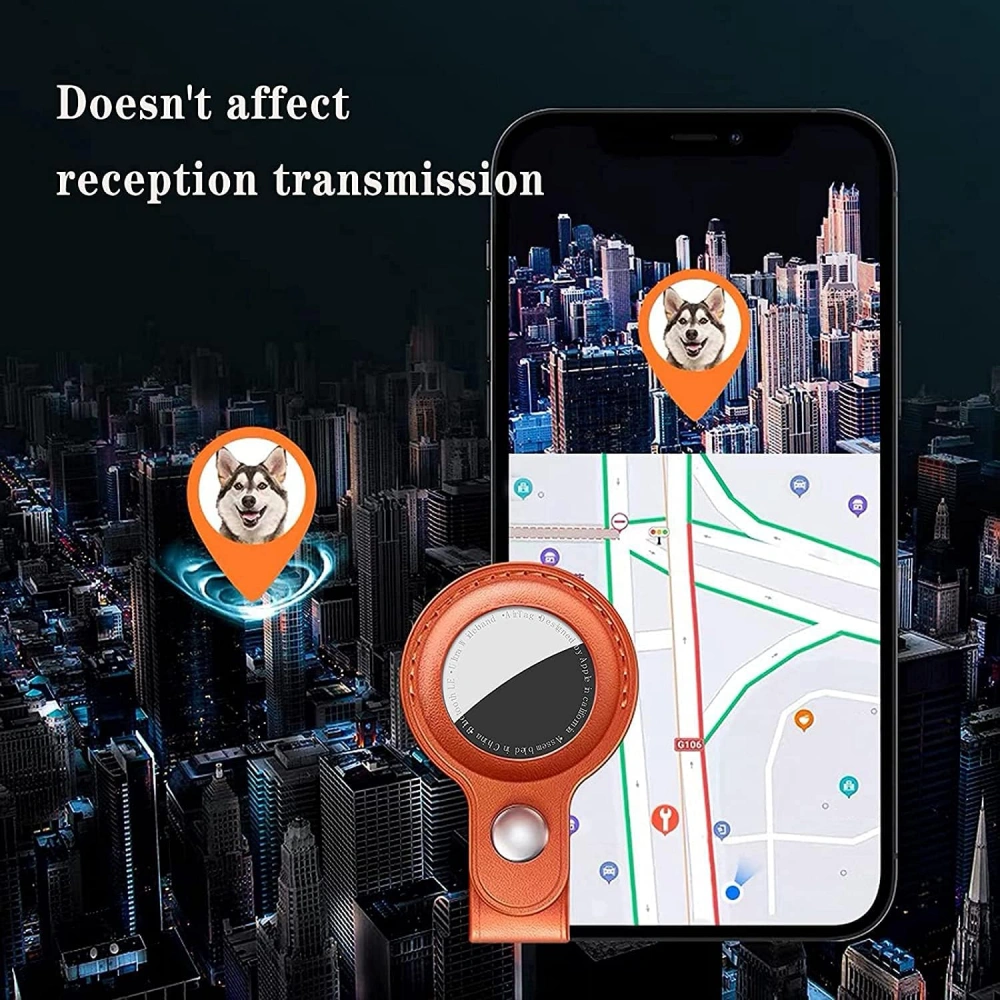Have you ever run in the park in the middle of the evening, raised your wrists in anticipation, only to find the Miles on your watch, your fitness App, and Your Friend’s device, as if from three different parallel universes. 5 km or 4.8 km? This small difference raises a common question among many sports enthusiasts: “How accurate are the distance trackers we rely on every day?”
The answer may be more complicated than you think. The accuracy of distance trackers isn’t simply a matter of“Accuracy” or“Inaccuracy.” It is a“Big play” co-directed by cutting-edge technology, complex algorithms, changing environments and personal usage habits. Today, we’ll take a look at the secret of precision.

Part One: the three core techniques of range tracking and how they work
To measure accuracy, we first need to understand how these devices measure distance. Consumer products rely on three core technologies:
1. GPS -GlobaloPositioningnSystemstem) : the gold standard for outdoor ranging
How it works: This is the most widely known technology. Your device (such as a watch or mobile phone) has a GPS chip inside that acts like a patient listener, constantly receiving signals from multiple navigation satellites in orbit. By calculating the time it takes for signals to travel from different satellites to the device, the device can accurately calculate its three-dimensional geographic coordinates (longitude, latitude and altitude) . As you move, the device keeps track of these points at a frequency (say, once per second) and then connects them to calculate the total distance traveled.
Accuracy Level: under ideal conditions, GPS is by far the most accurate ranging technology for consumer-grade devices, providing meter-level positioning accuracy.
2. Accelerometer: the“Translator” of steps
How it works: almost all smart wristbands, watches and phones have accelerometers built in. This tiny sensor is sensitive to your body’s movements, especially the periodic vibrations of your arms as you walk or run and your feet as you land. It calculates the total number of steps by identifying these unique vibration patterns. The device then estimates an average stride length based on your pre-entered personal information, such as height or gender, or an algorithm that learns your habits. Finally, use a simple formula: distance ≈ number of steps × average stride length to estimate the total distance you have covered.
Accuracy: this is essentially a method of estimating. Their accuracy is highly dependent on two things: the accuracy of step counts (for example, they can be miscounted when riding in a bumpy car) and the appropriateness of stride length (different stride lengths for uphill, Downhill, sprint, and slow walking) .
3. Cellular networks and WI-FI location: GPS-assisted“Navigators”
How it works: When You’re indoors, in tunnels or in an“Urban canyon” of tall buildings, the GPS signal becomes very weak or even interrupted. At this point, your device will fire up a backup plan. It scans nearby cell towers and Wi-Fi hotspots and compares that information with a huge database of known cell towers and Wi-Fi hotspots to get an estimate of your general location.
Accuracy Characteristics: the accuracy of this positioning method is much lower than that of GPS, and the error may range from tens of meters to hundreds of meters. It is mainly used to make up for the blind area of GPS, or to help lock in a position faster when GPS is activated (i. e. , A-GPS, assisted Global Positioning System-RRB- .
Part II: the mainstream distance tracking device precision big competition
Now that we’ve looked at the core technologies, we’ll take a look at how accurate the mainstream devices are.
1. Professional GPS sports watches (brands: Garmin, Suunto, Coros)
Technology mix: these watches are designed for serious athletes. They usually use high-performance, low-power GPS chips to support multi-star systems (such as GPS, GLONASS, Galileo, Beidou) , pressure altimeter (for accurate measurement of altitude climbing) , gyroscopes and accelerometers and other sensors are integrated, and data fusion is carried out through complex algorithms.

Accuracy Analysis:
Outdoor Open Area: the highest accuracy. In the playground, parks, countryside and other unobstructed environment, the error between the recorded distance and the actual distance can usually be controlled within 1-3% , which is the ceiling of the current consumer products.
The Challenge: even specialist watches can ‘drift’ between skyscrapers or in dense virgin forests, where GPS signals are blocked and reflected (the ‘multipath effect’) , this leads to a decrease in accuracy.
Conclusion: outdoor sports enthusiasts and data control preferred, the most reliable accuracy.
2. Smart watches and fitness bands (brands: Apple Watch, Fitbit, Xiaomi Band)
Technology mix: marketed more towards daily health and fitness, its technology mix is fragmented:
Built-in GPS: mid-to high-end models like the Apple Watch, whose accuracy is very close to that of a professional sports Watch, are adequate for most users’ running and cycling needs. But the GPS chip and antenna design may still be slightly off the top-of-the-line pro model.
Connected GPS: many entry-level wristbands and watches don’t have a GPS chip on them and require a Bluetooth connection to the phone to call the phone’s GPS to record the distance. Therefore, its accuracy depends entirely on the GPS capability of your phone.
Rely solely on accelerometers: the basic wristband has no GPS function. All distances are measured by step counting and estimated stride length, with large margins of error, which can be as high as 10% or more in non-uniform motion.
Conclusions: excellent trackers of daily activities. Users seeking accurate outdoor records should choose models with built-in GPS.
3. Smartphone apps (Nike Run Club, Strava, Keep)
Technology mix: the accuracy of these apps depends entirely on the smartphone they run on. They use the phone’s built-in GPS, accelerometer, and network location capabilities to do all the calculations.
Accuracy Analysis: phones aren’t specifically designed for motion tracking. The quality of the GPS chip, the design of the antenna (which is often placed inside the fuselage for aesthetics) , the optimization of the background running algorithm, and the built-in power management strategy of the system will significantly affect the positioning accuracy. In the same environment, the smoothness of the tracks and the accuracy of the distances on straight roads recorded by a mobile phone are usually slightly less than those recorded by a professional GPS watch.
Conclusion: the most convenient and the lowest cost choice is suitable for the mass fitness, but the accuracy fluctuates most among the three, and it is also most vulnerable to the influence of mobile phone model and system setting.
Part 3: what affects the accuracy of distance measurements?
In addition to device differences, the following factors can also act as“Flavorings” that alter the distance data you eventually see:
1. GPS signal quality: the most critical external factor
Sky openness: this is the most important variable. The more open the sky, the more satellites the device can“See,” the stronger the signal, and the more accurate the positioning. Conversely, in between tall buildings, under the dense canopy, tunnel or indoor, the signal is blocked or reflected, the accuracy will drop sharply.
Weather conditions: extreme weather, such as very thick clouds, heavy rain or snow, can degrade satellite signals somewhat, but the effect on modern GPS devices is becoming less and less pronounced.
TTFF: When you start the motion mode, the device takes time to search and lock on to enough satellite signals, a process known as“Satellite searching.”. If you start moving immediately on a“Cold start”(the first boot after a long shutdown or long move) , the record of the initial phase may be inaccurate.
2. Sensors and algorithms
Hardware Quality: you get what you pay for. The GPS chips and sensors used in high-end devices are superior in sensitivity, anti-jamming and power control.
Software algorithms: this is the core competency that drives the brand gap. The excellent algorithm can effectively identify and correct the“Drift” data of GPS, intelligently filter out invalid steps such as riding bumps, and can fuse and correct the data of multiple sensors such as GPS, accelerometer and barometer, output a result that is far more reliable than a single source.
3. User settings and habits
Personal information settings: for devices that rely on steps to estimate distance, if you’ve never accurately set your height or weight, the stride estimates are likely to be wrong from the start.
Wearing Way: if the watch or bracelet is too loose, it will cause too much shaking, which will affect the accurate identification of the accelerometer to the motion state and the number of steps.
Device Power Mode: many phones and watches have low-power modes to save power. This usually reduces the GPS sampling frequency (from, say, 1 every second to 1 every 10 seconds) , records fewer dots, and makes the trajectory“Angular”, especially when taking a“Short cut” around a corner, this results in a shorter total distance.
Part 4: How can you make your distance tracking more accurate?
It’s not 100% accurate, but there are a few simple things we can do to maximize accuracy:
Before exercise:
Pre-stabilize the GPS signal: before you start recording, go outside to an open area and sit in motion mode for a few minutes until the device says“GPS ready” or the signal is full.
Keep up-to-date: Sync your device with an App on a regular basis. This not only updates the firmware and optimizes the algorithm, but also downloads the latest AGPS ephemeris data to help the device“Position” in seconds.
Calibrate your profile: take a minute to check and update your height, weight, wrist wear, etc. on your App or device.
On the move:
Choose the right exercise mode: different exercise modes (e. g. running, trail running, cycling) will call for different algorithm optimizations. Choose patterns that match your activity.
Turn off extreme power saving mode: if distance accuracy is important to you, make sure the device is in normal or performance mode.
After exercise:
Check your tracks: View the map tracks recorded in the App. The accuracy of this record may be compromised if the track“Floats” on water, passes through buildings, or is zigzagged on a straight path.

Conclusion
Back to the original question: are the range trackers accurate? Now we can give a more comprehensive answer: there is no device that is absolutely accurate, but it is accurate enough for most people. The key is to understand how it works and choose the right tool.
For runners and adventurers looking for extreme precision, competing or taking every workout seriously, investing in a professional GPS sports watch makes perfect sense.
For mass fitness enthusiasts aiming to stay fit and keep track of their daily activities, a smartwatch with a built-in GPS or a high-quality mobile App is more than enough.
Above all, we should take a more rational view of the data. Instead of obsessing over the tiny difference of 0.1 km in a single run, focus on long-term trends-are you running more often? Are your paces steadily improving?
After all, technology is designed to better serve and motivate us. Understanding the precision and limitations of the tools will allow us to use the data more intelligently and ultimately return to the exercise itself, enjoying the health and pleasure of the process.







